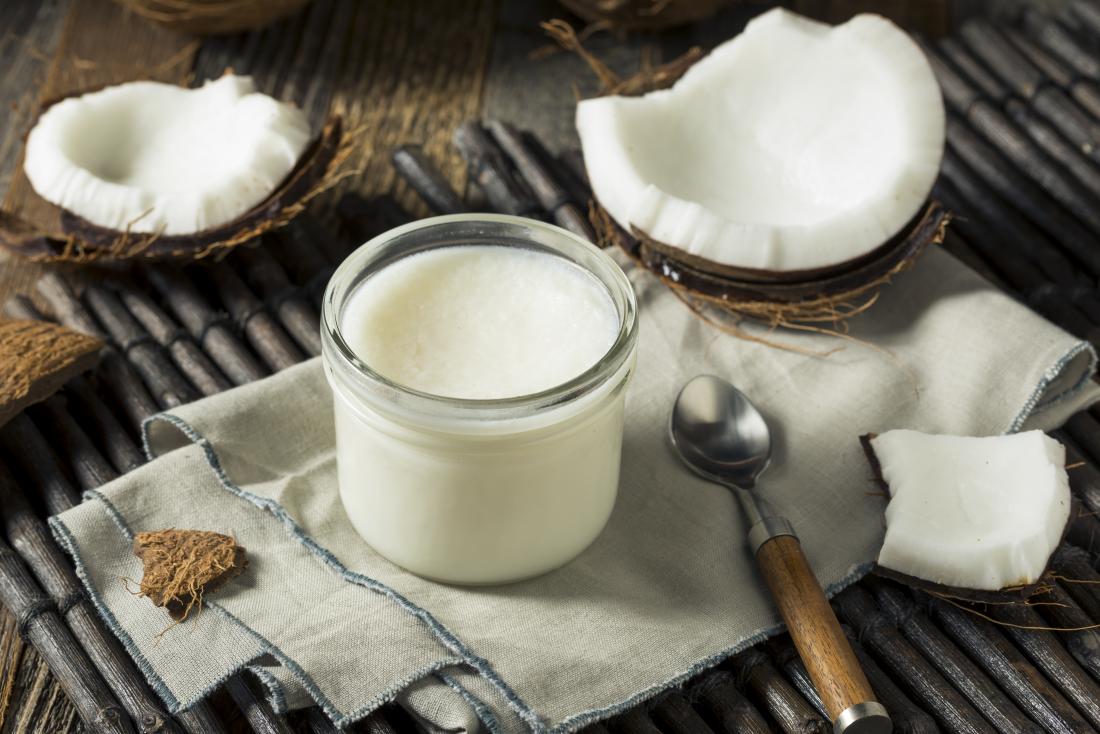Oil pulling with coconut oil is easy to fit into a regular oral health routine. Coconut oil is available at grocery stores and online, and people do not need any additional ingredients.
In this article, learn about what oil pulling is, how to do oil pulling with coconut oil, and about the possible benefits and risks.
What is oil pulling?

Benefits of oil pulling include killing harmful bacteria in the mouth and preventing cavities.
Oil pulling is an oral health routine that involves swishing oil around in the mouth in a similar way to mouthwash, but for a much more extended period.
Coconut oil is a highly absorbable oil with several health benefits, including reducing inflammation and fighting harmful bacteria. It is also edible, so has few risks for oral use.
Most supporters of oil pulling recommend swishing a tablespoon of oil in the mouth for 15–20 minutes to reduce harmful bacteria in the mouth and on the teeth.
Benefits
Benefits of oil pulling with coconut oil may include:
Killing harmful bacteria in the mouth
The mouth contains hundreds of bacteria, some of which are harmful and may lead to tooth decay, bad breath, and gum disease.
According to a 2016 study on 60 participants, oil pulling can reduce the number of bacteria found in the saliva and can help support proper oral hygiene. The authors stated that coconut oil was a safe alternative to chlorhexidine, which is an ingredient in some mouthwashes.
Reducing bad breath
Bad breath is generally due to poor oral hygiene, tongue coating, infection, or gum disease as a result of bacteria buildup.
According to a 2011 study, oil pulling may be an effective natural alternative for bad breath and may work as well as traditional treatment with chlorhexidine.
Preventing cavities
Cavities stem from tooth decay as a result of bacteria buildup, poor oral hygiene, and consuming too much sugar.
Plaque can also cause cavities by forming a coating of bacteria, saliva, and food particles on the teeth that can damage the enamel.
According to 2016 research, oil pulling may decrease the number of harmful bacteria in the mouth, possibly helping to prevent cavities. In addition to brushing and flossing, this can be another way to achieve optimal oral health.
Reducing inflammation and improving gum health
The bacteria in plaque may lead to gingivitis, which is a common gum disease characterized by red, swollen, and inflamed gums that bleed easily.
Research suggests that coconut oil can reduce inflammation. This may benefit oral health and inflammation in the mouth.
According to a small 2015 study, oil pulling with coconut oil reduced plaque and could help prevent plaque-induced gingivitis.
Whitening teeth
Although there is no scientific evidence to confirm that oil pulling can whiten teeth, anecdotal evidence suggests it may clear stains from the surface of the teeth. There is little risk in trying to whiten teeth in this way.
Risks and considerations
It is not safe for people with allergies to coconuts or coconut oil to try this technique. Otherwise, there are no known risks for oil pulling with coconut oil.
Oil pulling does not replace brushing one’s teeth, flossing, and other oral care techniques.
How to do an oil pull

After an oil pull, spit coconut oil into the garbage and not into the sink or toilet.
To do an oil pull with coconut oil, place a tablespoon of coconut oil in the mouth. Those who do not like the taste of coconut oil can use other oils, such as sesame oil or olive oil.
Sit upright and swish the coconut oil around the mouth for 15–20 minutes. People who have difficulty keeping the coconut oil in their mouth for this length of time can start with 5 or 10 minutes and slowly increase the duration. It is essential to keep swishing and to breathe through the nose.
Once done, spit the oil in the garbage. Avoid spitting into the sink or toilet, as it can lead to clogging. Do not swallow the coconut oil.
Most recommendations suggest brushing the teeth immediately after an oil pull. However, some people believe that it is better not to brush right away to allow the retention of good bacteria and the rebalancing of the oral microbiome.
Either way, proponents recommend using a separate toothbrush after oil pulling to the one used for daily teeth cleaning.
Takeaway
Existing scientific studies support some benefits of oil pulling with coconut oil, but there is not enough evidence to determine whether it is effective.
However, oil pulling is a simple, affordable, and generally safe technique to add to an existing oral health routine.
Let’s block ads! (Why?)





